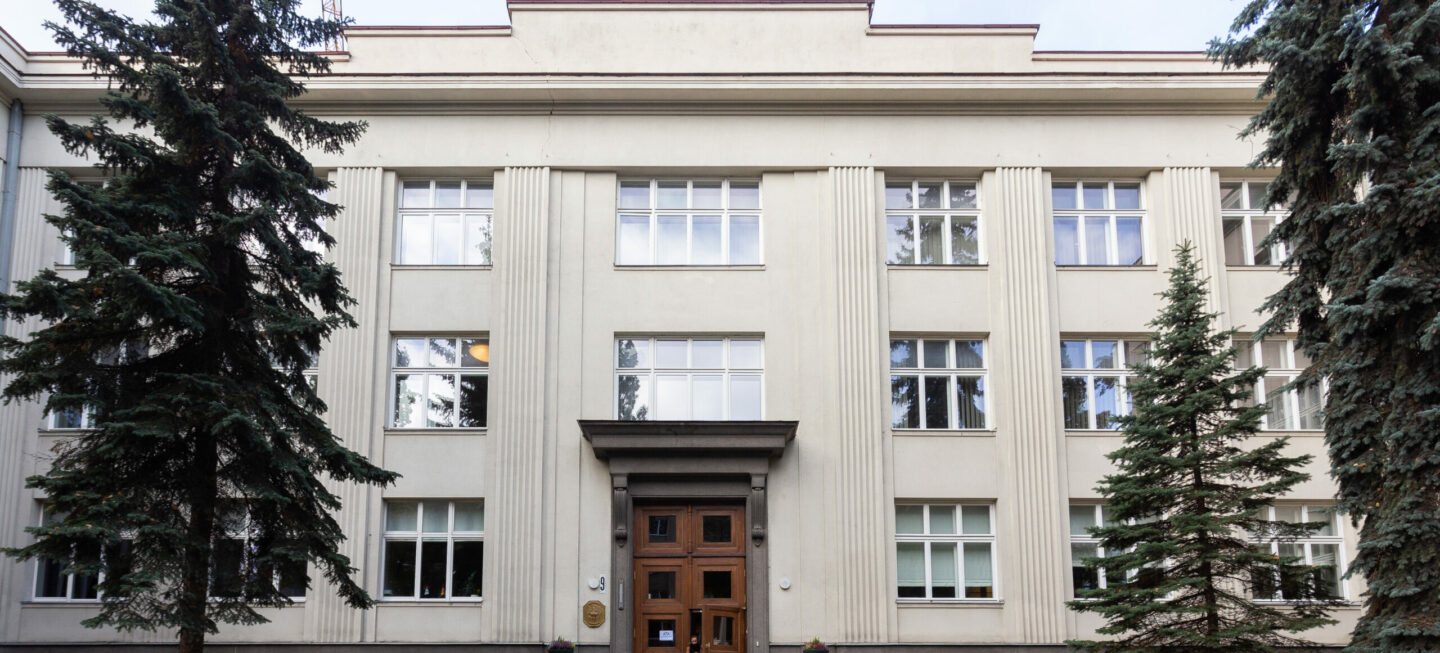Establishment of Higher Medical Courses were established, which at the end of January 1920 became the Department of Medicine of the Higher Courses.
Medical academy


Historical development of the Medical Academy
In 1918-1919, in Lithuania exhausted by the First World War and independence struggles there was a vital shortage of doctors. The Kaunas Medical Society proposed to start practical training in city hospitals for medical students who had completed three or more courses. The first such activity was held on 15 October 1919. It was organised by surgeon Juozas Žemgulys at Kaunas State Hospital.
In December 1919, the Ministry of Education at that time officially allowed the activities of Higher Medical Courses, and on 22 January 1920 approved the statute of these courses. On 27 January 1920 the Higher Medical Courses became the Medical Department of the Lithuanian Higher Courses. In 1921 Pharmacy and Odontology sections have been established in the Medical Department.
On 16 February 1922, after the opening of the University of Lithuania, its Faculty of Medicine had departments of Medicine, Odontology, Pharmacy and Veterinary Medicine (until 1928). Due to the lack of scientific personnel, the positions of heads of some departments were taken by professors from abroad. Clinical departments were located in the big hospitals of Kaunas. 1930 The Eye, Ear, Nose and Throat Clinics of the Faculty of Medicine were built on Vytautas Avenue. In 1932, in the place of the former anatomicum in A. Mickevičius street the construction of the Central Building of the Faculty of Medicine was completed. In 1937 the construction of the Faculty of Medicine Clinics in Žaliakalnis began. In July 1940 all departments of the clinics, equipped with 663 beds, were already prepared for the reception of patients.
1940-1941 during the Soviet occupation, part of the scientific staff of the Faculty of Medicine was dismissed, some students and lecturers were deported. After the beginning of the Nazi occupation, part of the lecturers who collaborated with the Soviet authorities were dismissed. The Clinics of the Faculty of Medicine had to move out of the new premises – a military hospital was established there. In the summer of 1944 part of the Faculty staff went to the West. After the resumption of activities in the post-war years, strict adherence to the instructions of the Soviet party and government was required. Some students were sentenced to prison for anti-Soviet activities.
1947-1950 young lecturers defended theses of candidates of medical sciences, volumes of works of the Faculty of Medicine were published. In 1948 Kaunas University Faculty of Pharmacy was established.
On 31 October 1950 by the order of the Soviet Minister of Higher Education, Kaunas State University was reorganised into Kaunas Polytechnic Institute and Kaunas Medical Institute (KMI) with two faculties – Therapeutic Medicine and Stomatology-Pharmacy. The fact that it was possible to preserve university medical studies in Kaunas at that time is associated with the Kaunas Clinics, which had no analogues in the then Soviet Union.
In 1968, the Faculty of Stomatology-Pharmacy was reorganised into two separate faculties. In 1969, the Faculty of Therapeutic Medicine was reorganised into the Faculty of Theoretical Medicine and Clinical Medicine. At that time, the material base of KMI was expanded, it participated in international programmes. The Cardiovascular System Physiology and Pathology Research Institute at KMI became one of the three World Health Organization (WHO) centres in Europe studying the epidemiology of ischemic heart disease.
In 1971-1972 the Kaunas Rotterdam epidemiological research study was successfully conducted. KMI had become a world-renowned science centre.
On 23 October 1989 the Kaunas Medical Institute became the Kaunas Medical Academy (KMA), where students from abroad began to study. After the restoration of independence, the KMA turned to democratisation and structural reforms: In 1992 Nursing and in1994 – Faculty of Public Health were established. In 1998 KMA was reorganised into Kaunas Medical University (KMU).
A new University Library and Information Centre opened in 2007. It is one of the most modern university libraries in Lithuania, which was designed and built according to the latest standards of university libraries in the world.
On 30 June 2010, after the resolution of the (LSMU) Statute of the Lithuanian University of Health Sciences was approved by the Seimas, Kaunas University of Medicine and the Lithuanian Veterinary Academy merged into the largest higher education institution training biomedical specialists in Lithuania
Important dates
Petras Avižonis confirmed as the first Dean of the Faculty of Medicine of the University of Lithuania. The Statutes of the University adopted by the Constituent Seimas provided for and started operating the Departments of Medicine, Pharmacy, Odontology and Veterinary Medicine.
By the initiative of Vladas Lašas, the Dean of the Faculty of Medicine, the construction of the Clinics of the Vytautas Magnus University was begun, the Clinics received the first patients in 1940.
Kaunas State University reorganised into Kaunas Medical (KMI) and Kaunas Polytechnic (KPI) Institutes.
Kaunas Medical Institute is renamed as the Kaunas Medical Academy (KMA). In 1990 the Academic Clinics were returned to Academy’s structure and in 1991 – the Institutes of Endocrinology and Cardiology. In 1992 the Institute of Psychophysiology and Rehabilitation were established, the Institute of Biomedical Research was reorganised, profile academic clinics were established, some departments were reorganised, and the reorganisation of studies was begun.
Kaunas Medical Academy is renamed as the Kaunas University of Medicine (KMU).
Following the merger of Kaunas University of Medicine and the Lithuanian Veterinary Academy, the Lithuanian University of Health Sciences is established (LSMU).
Kaunas Medical University became the Medical Academy within LSMU.
RECTORS
-
1947–1953 m.Prof. Juozas Kupčinskas
-
1953–1984 m.Prof. Zigmas Januškevičius
-
1984–1991 m.Prof. habil. dr. Antanas Praškevičius
-
1991–2002 m.Prof. habil. dr. Vilius Jonas Grabauskas
Chancellors
-
2002–2016 m.Prof. habil. dr. Vilius Jonas Grabauskas
-
2016 m. – presentProf. habil. dr. Daiva Rastenytė
